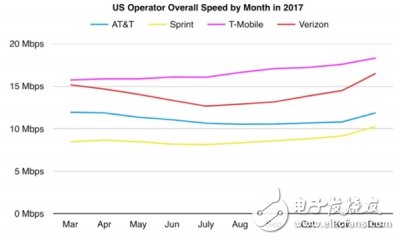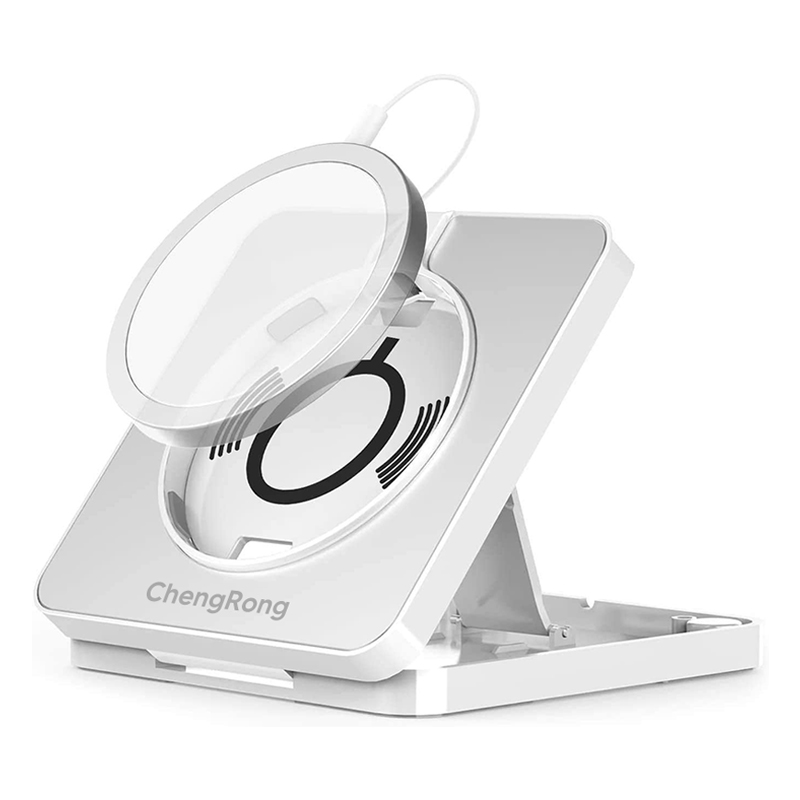The market is fiercely competitive, income growth is weak, and new power is unclear... This is a common problem faced by operators in many regions. How to achieve healthy sustainable growth? While many operators are locking their way out of transformation and cross-border, some operators are beginning to work in traditional areas – in the current state of high capital pressure, as much as possible to squeeze out funds to build a boutique network, by providing excellent The service retains old customers and develops new customers.

European network investment boom
Since last year, European operators represented by Germany and France have begun to build networks. Judging from the recent data sets, the French and German operators' network investment is reaching a small climax.
A report released by French telecommunications regulator Arcep recently showed that French telecom operators' investment in 2017 reached a record high of 9.6 billion euros (about 71.76 billion yuan), an increase of 600 million euros over 2016. (Approximately 4.487 billion yuan), the main reason is that operators are actively investing in the layout of fiber optic networks and 5G.
Arcep Chairman SebasTIen Soriano said: "Two years ago, I asked operators to open their money bags, improve the nation's network coverage, and help France to keep up with the big forces in the era of connectivity. Last year, French operators invested 9.6 billion euros, we see The telecommunications industry is constantly delivering on its promises to make up for the lost time and match the French infrastructure and needs."
Yves Bellego, head of technology and network strategy at the French-led operator Orange (formerly France Telecom), said that the company is investing more in the network and globalization. The investment in the past few years has continued to increase, mainly for FTTH (fiber to the home) ). The data shows that Orange's investment in the network has brought tangible returns to the company in the past year. The company's 4G network coverage in France and Spain has increased to 96%, while the average speed has also increased significantly. Bellego revealed that Orange users' mobile and fixed access speeds tripled between 2014 and 2018.
Bellego said that G-class (gigabit) optical networks can revolutionize the digital life of consumers, as well as operators. He pointed out that for operators, deploying all-optical networks can provide users with higher quality services, and equally important, operators can also obtain higher profits. “We have been deploying FTTH for many years, and the current scale of users is huge. From the perspective of operators, we have a lot of benefits from optical network – there is more network capacity, better upgrades, and operations are simplified. Traditional copper network, optical network maintenance is much simpler.†He pointed out that optical network is still based on providing bundled services, increasing service categories, and providing high-quality video.
Deutsche Telekom CEO TIm Hottges also made clear at the investor conference held recently that it will invest hundreds of millions of euros in Germany to improve the fiber-optic network, "will redouble efforts to promote fiber-optic network construction." In fact, Deutsche Telekom has been increasing its investment in optical networks in recent years. Last year, Deutsche Telekom invested 5.4 billion euros in the local network. The company currently has a 40% share of the broadband market in the country, with the goal of providing high-speed Internet services to 80% of German households by the end of the year. Specifically, the company plans to provide broadband services at a rate of 100 Mbps for 26 million homes in Germany and high-speed broadband services at 250 Mbps for 15 million homes by the end of the year.
Deutsche Telekom's move is also partly due to changes in the domestic competition situation. Not long ago, Vodafone acquired Liberty Global's fiber-optic asset Unity Media in Germany, which became the second largest network service provider in Germany and formed a greater impact on Deutsche Telekom.
Deutsche Telekom's network investment is not limited to fixed networks. The company is also working on mobile networks. According to the company, the amount of investment in mobile networks in Germany is even greater than the sum of investment from other German service providers. Hottges said that Deutsche Telekom will build 1200 and 2000 base stations respectively in the country this year and next year, and will provide high-speed LTE mobile services to 95% of customers in Germany and Europe by the end of this year. Deutsche Telekom has previously launched the NB-IoT service in eight European countries and the United States.
Deutsche Telekom hopes that fiber will also help other business units. This coincides with Orange. Bellego revealed that Orange will consider 5G needs when deploying fiber backhaul networks.
At present, many large European operators are investing in fiber-optic networks to provide G-class (Gigabit) broadband networks and enhance 4G and LTE coverage. This will also lay a better foundation for 5G development.
American giants hold an unlimited test
In the United States, the operation of the network is more representative. Last year, four large US operators successively restarted unlimited data packages. In addition to triggering service competition in the market, the initiative also had a direct impact on US operators' network management strategies.
As we all know, in 2007, after the rapid adoption of Apple mobile phones in the United States, US carriers have promoted an unlimited number of unlimited data packages. However, due to the surge in traffic, the network burden was too large. After the additional investment improved the network for two years, the US operators unanimously stopped the unlimited data package. Around 2010, US carriers began to deploy LTE networks. It has accumulated over the past few years and the network capacity has increased significantly. But after re-creating an unlimited number of packages in the US market last year, AT&T and Verizon, both of which are known for their excellent network quality, have experienced challenges – months after the launch of the unlimited package, the average speed of mobile services dropped significantly.
To this end, the urgency of US operators to improve network performance is stronger. According to a survey from a third-party company, OpenSignal (note: OpenSignal's data is collected through user-downloaded mobile apps), US carriers significantly increased their network investment in 2017, especially in improving LTE networks. This has had a tangible effect—although the unlimited number of packages has led to a surge in user data usage, the average mobile network speed of the four major US carriers increased in 2017, both exceeding 10 Mbps. OpenSignal explained that this average speed value includes the 3G network speed without the LTE signal zone. Specifically, T-Mobile has the highest average speed, slightly higher than Verizon in March last year. Since then Verizon has followed up to enable unlimited data packages, the average speed of the network has dropped significantly, and the average speed difference with T-Mobile has further widened. But as Verizon increased its network investment, its network performance was effectively improved, and the gap between the network and T-Mobile's network speed was narrowed again at the end of the year (see chart). Even Sprint, the fourth-largest US operator that was previously acquired by T-Mobile, has worked hard on the network. The company increased its investment in tower operations last year, with remarkable results.
This strategy is still continuing. In the first quarter of this year, Verizon and AT&T both increased their network investment, and Verizon's quarterly investment increased by 50% year-on-year. Other US carriers have also said that this year's network investment will be higher than last year. Deutsche Bank analysts said earlier this year that US wireless carriers' overall capital spending in 2018 will rise 14% to $30.5 billion, the highest since 2014.
Cell Phone Holder Ring, Iphone Charging Stand, Mobile Phone Holders Ring, Phone Holder Ring source manufacture in China.
Shenzhen Chengrong Technology Co.ltd is a high-quality enterprise specializing in metal stamping and CNC production for 12 years. The company mainly aims at the R&D, production and sales of Notebook Laptop Stands and Mobile Phone Stands. From the mold design and processing to machining and product surface oxidation, spraying treatment etc ,integration can fully meet the various processing needs of customers. Have a complete and scientific quality management system, strength and product quality are recognized and trusted by the industry, to meet changing economic and social needs .


Phone Holder Ring,Iphone Charging Stand,Mobile Phone Holders Ring,Ring Smartphone Holder
Shenzhen ChengRong Technology Co.,Ltd. , https://www.dglaptopstandsupplier.com